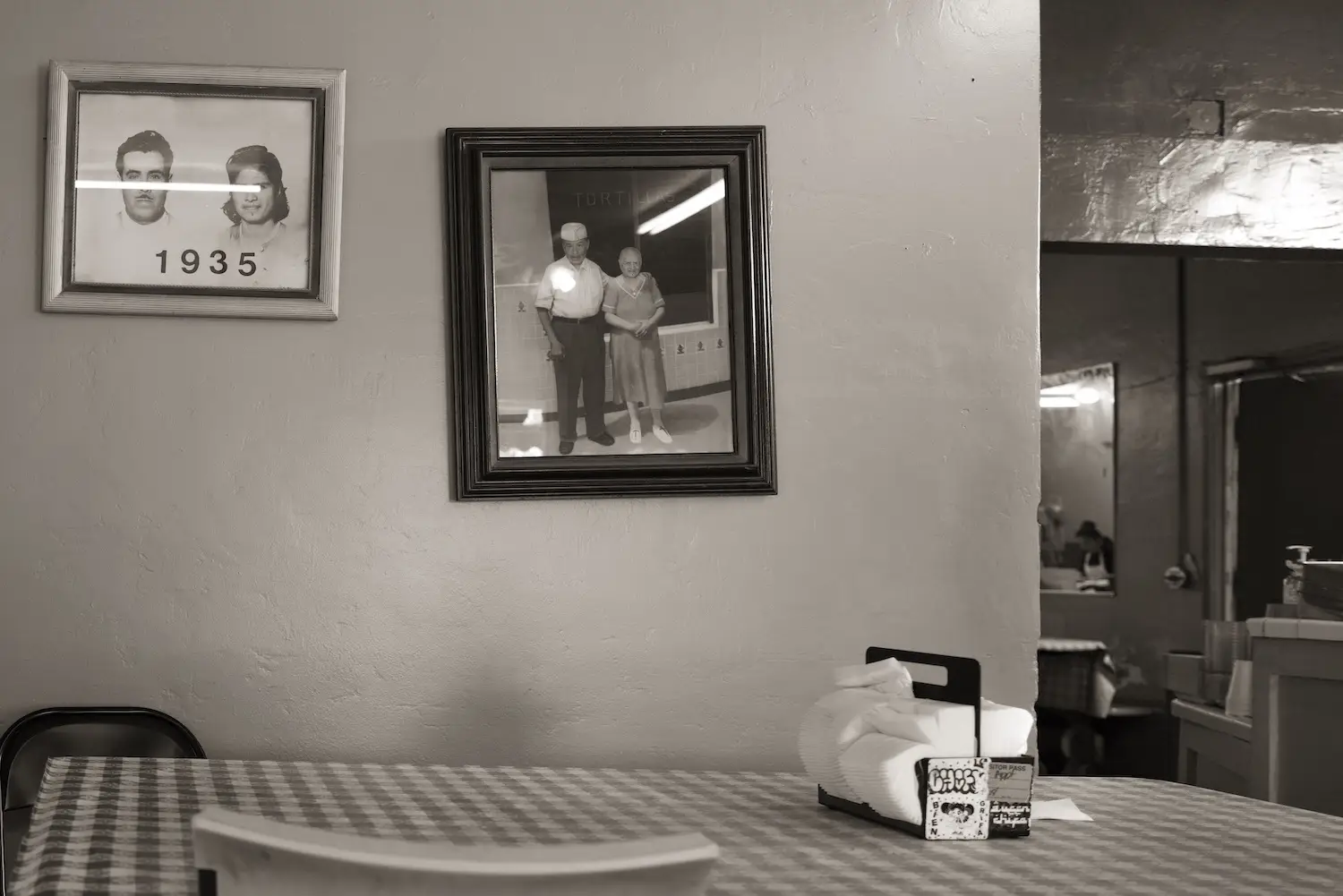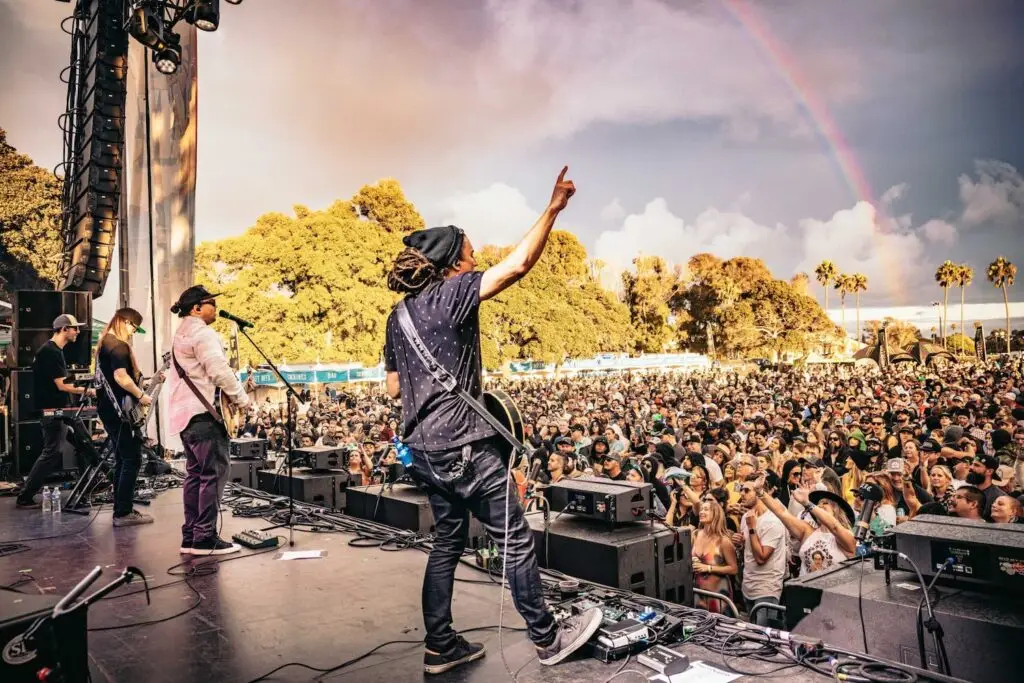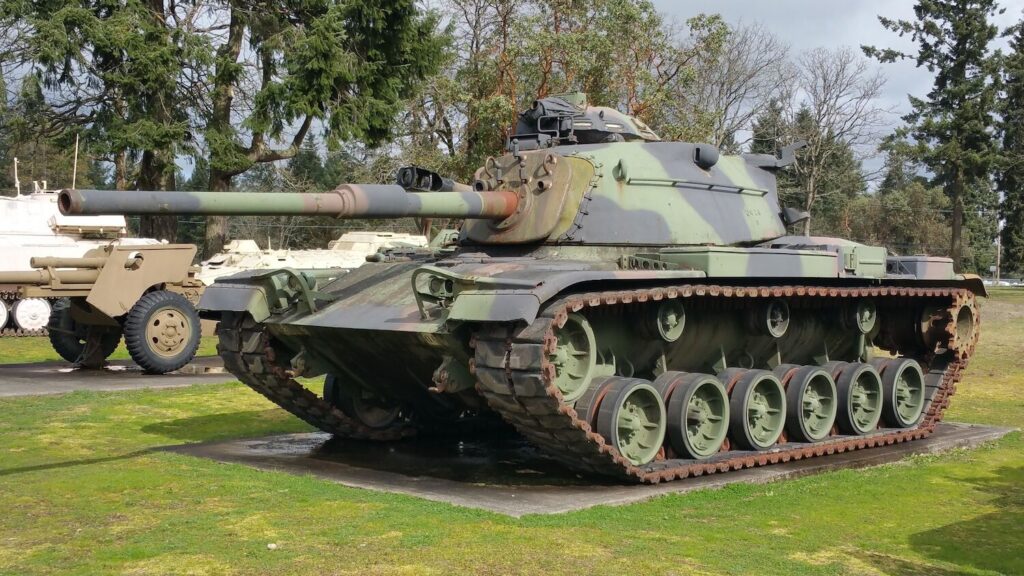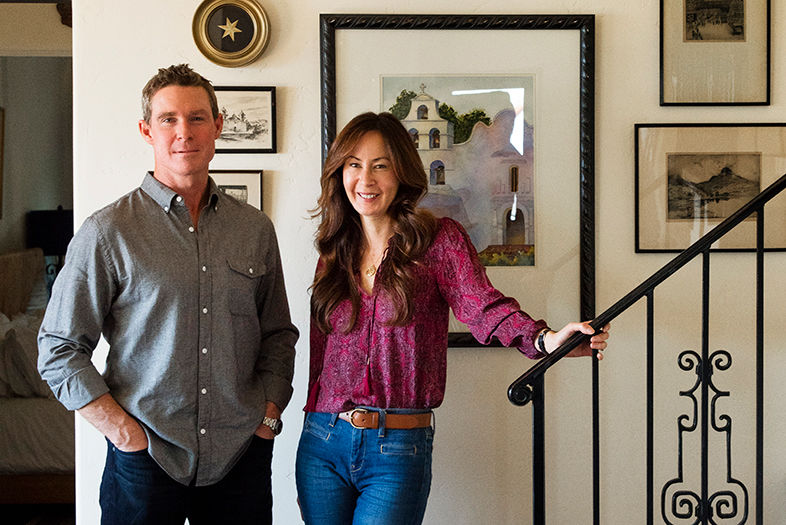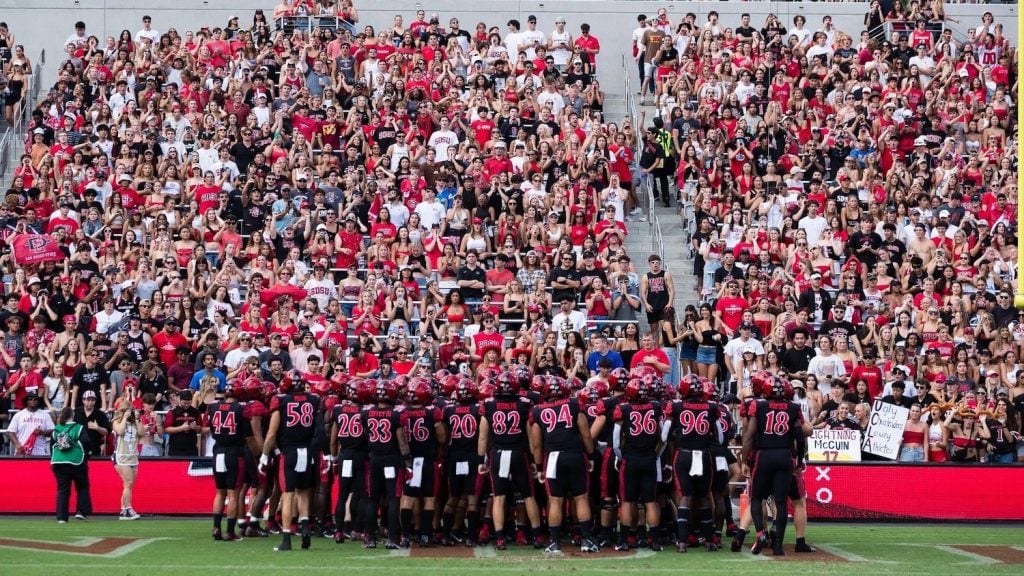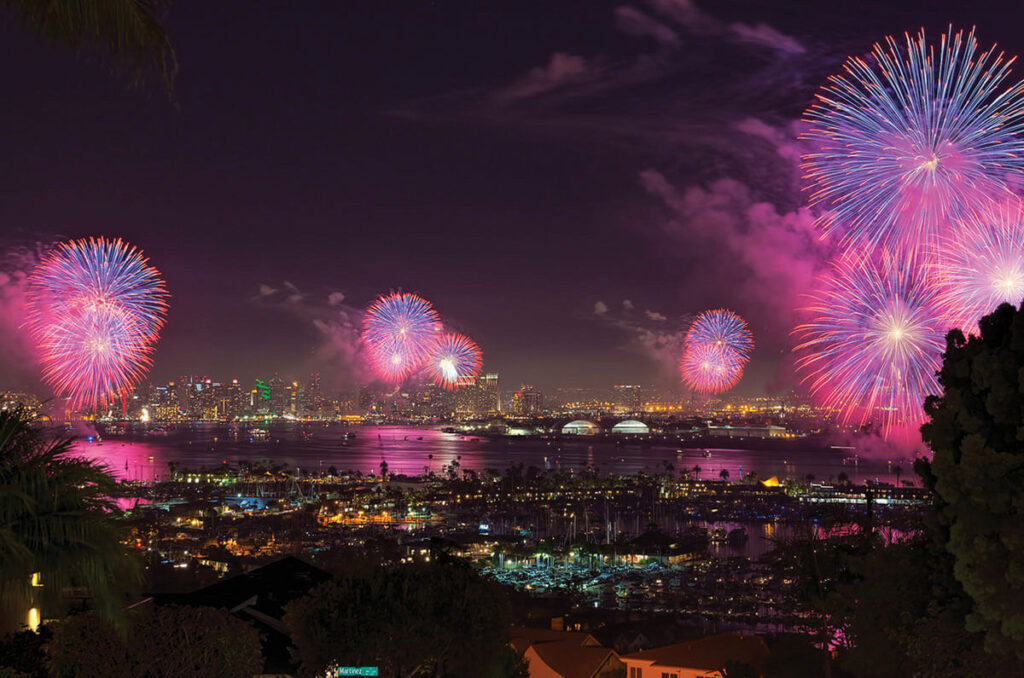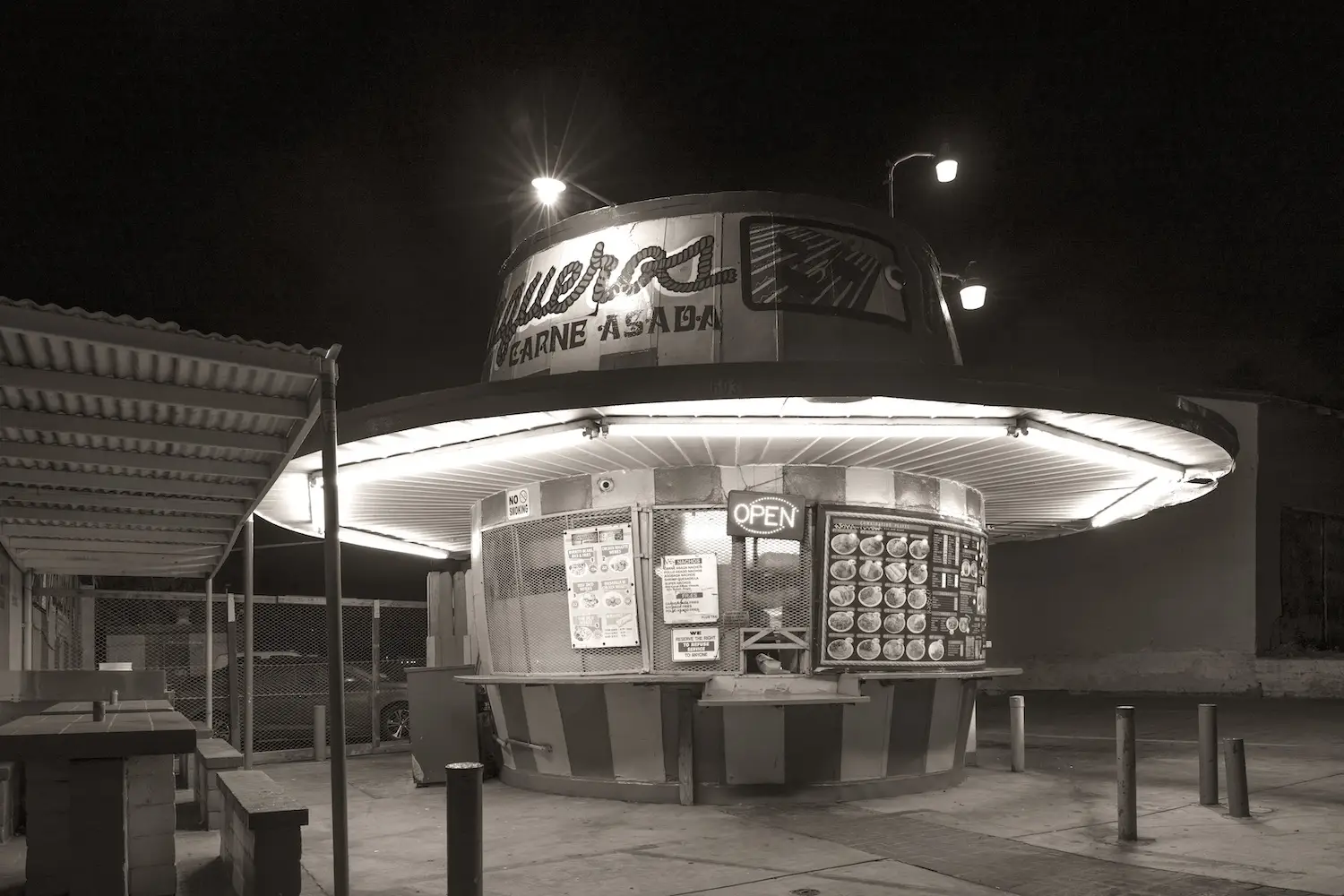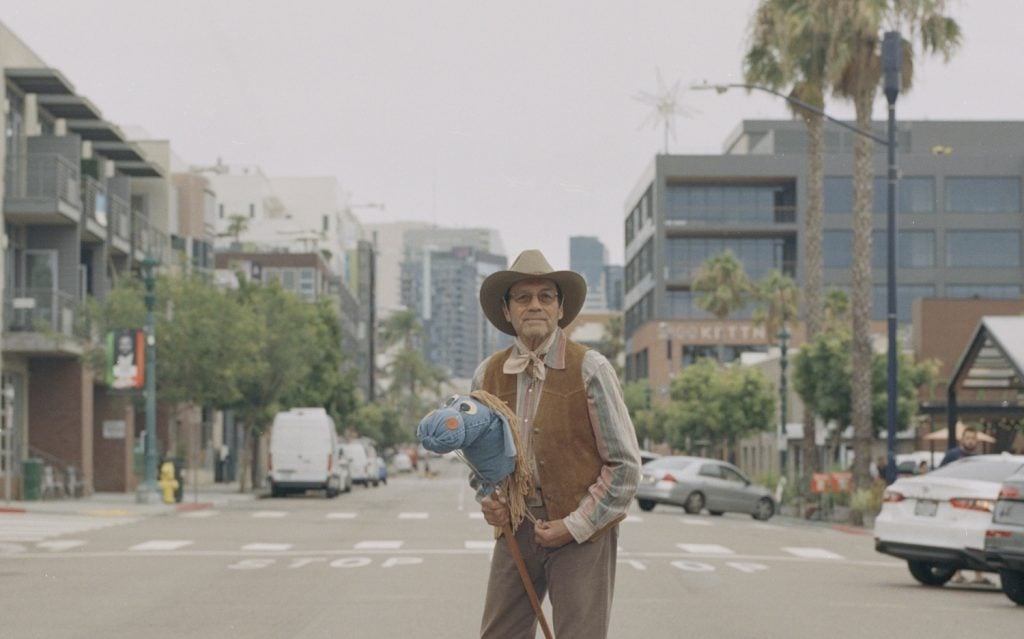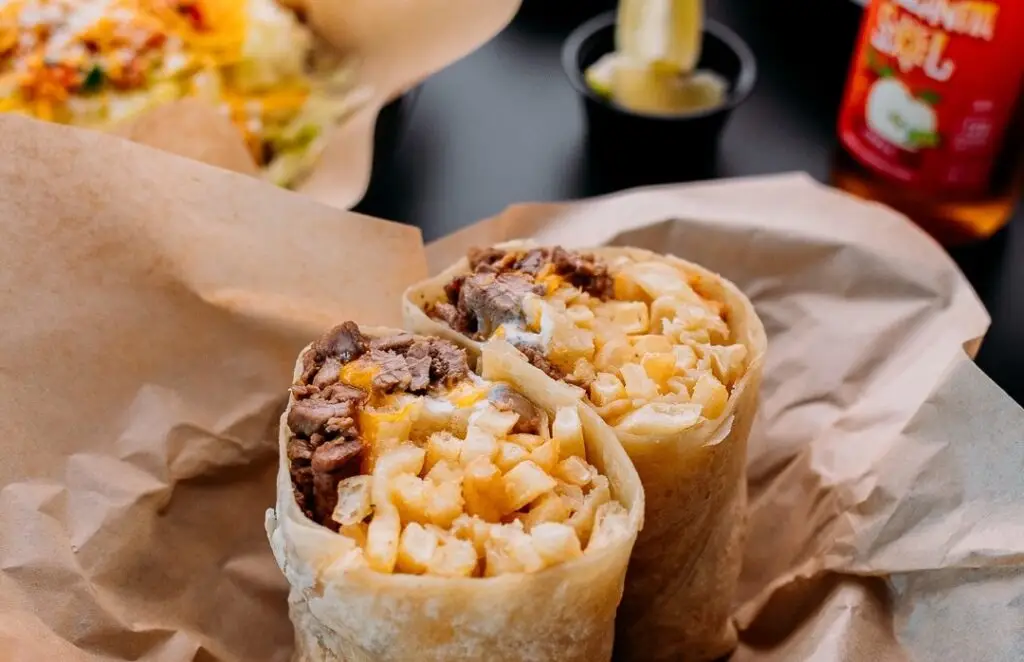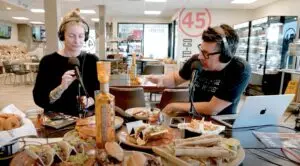San Diego’s taco shops don’t just feed our city, they cultivate culture. In Marshall Williams’ Taco Stand Vernacular photo series, these tortilla temples become a rigorous, black-and-white typology—glowing kiosks and drive-throughs isolated at dusk when the sky goes soft and signage calls to hungry dinner seekers.
“One evening, I was stopped at a stoplight, and was gazing over at this taco stand. It was sunset, and the way it was illuminated, it made such a transition, like it donned this evening persona. It just changed into this very kind of ‘come-hither’ being,” Williams says. “My interest is in the physicality of these places, their unique personalities.”
In these images, Williams honors each stand’s architecture and iconography, treating them as social focal points. Seen together, patterns surface.
“When I began to lay the images out, I could see this sort of visual lexicon that was developing,” he says. “You begin to see these interesting elements that are continually reoccurring, like arrows in the road—there’s often some sort of directional component. Or light-hearted motifs or 24-hour signs that are all articulated in different ways.”
Williams, who studied at the Brooks Institute of Photography in Santa Barbara and now lives in Hillcrest, has been a fixture of SD’s photo scene for decades. For 25 years, he co-ran Mantoani-Williams Studio on India Street, primarily doing commercial and studio work.
But this exploration is something else, slotting neatly into a lineage of intentional seeing: Bernd and Hilla Becher’s cool taxonomies of industrial forms; Ed Ruscha’s deadpan gas-station photo books; the New Topographics’ insistence that the manmade landscape is still a landscape. Williams inherits that discipline while bending it local. He explores corners as they morph and find new life, like a reincarnated A&W root beer barrel–shaped building of old, now serving Mexican fare.
What emerges is a large-scale portrait told in palm trees, surfboards strapped to roof racks, and the patient welcoming of fluorescent light. Rather than chasing nostalgia, Williams’ images catalog a classic and familiar yet evolving design, allowing us to see San Diego in a new, more connected way. Beloved neighborhood monuments are perceived, documented, honored.
PARTNER CONTENT
“When these structures are long gone, it’s the photograph that becomes the keeper of the details, the proof and the story of their existence,” Williams says. “Photographs play such a vital role because these taco stands represent an identity for us here in San Diego. This is who we are as a culture.”
Photos by Marshall Williams
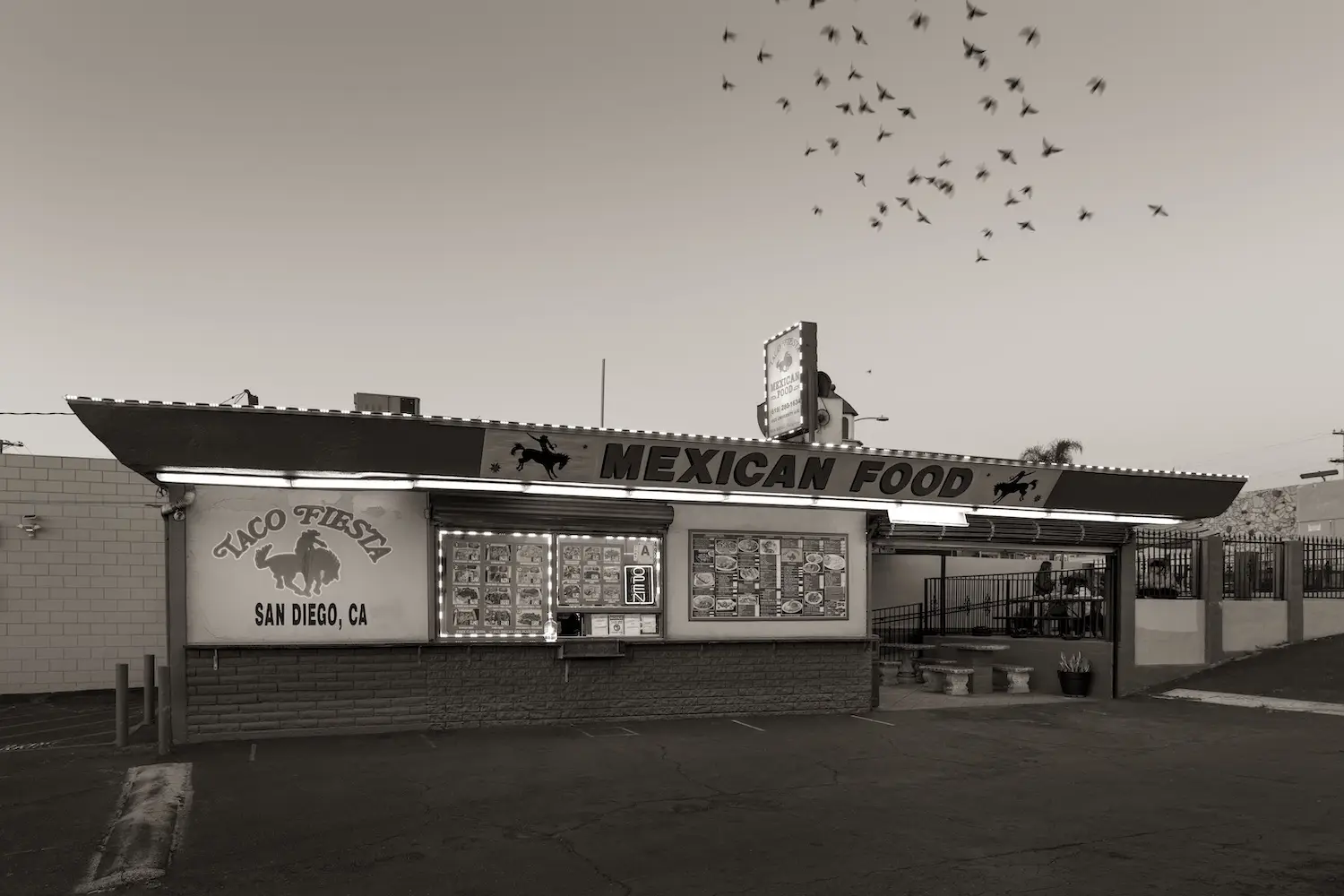
“What I love about this image is the flyover. Flocks of birds have symbolism of divine intervention, so I really enjoy the spiritual component of this photograph. One of the things I’m always looking for is gesture in a photo, because, if you consider the three main components of photography [to be] composition, lighting, and gesture, it’s gesture where you really deliver the content and the story.”
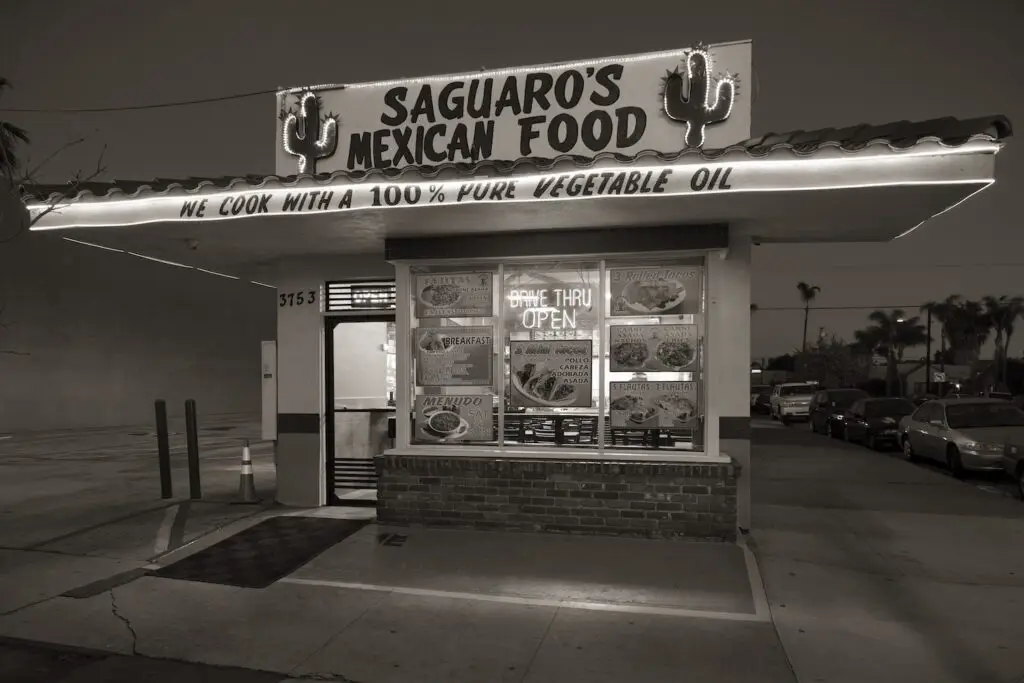
“Saguaro’s was one of the first ones that I photographed. The ‘we cook with 100 percent pure vegetable oil’—it’s so campy. And the fun cactuses. I drove by there recently, and it doesn’t look the same anymore. They’ve removed some of that campiness in the signage, and they changed colors. So that’s another interesting part of how this project has evolved—to watch how these places change over time. You begin to realize I sort of encapsulated this period of time where they existed in this way.”
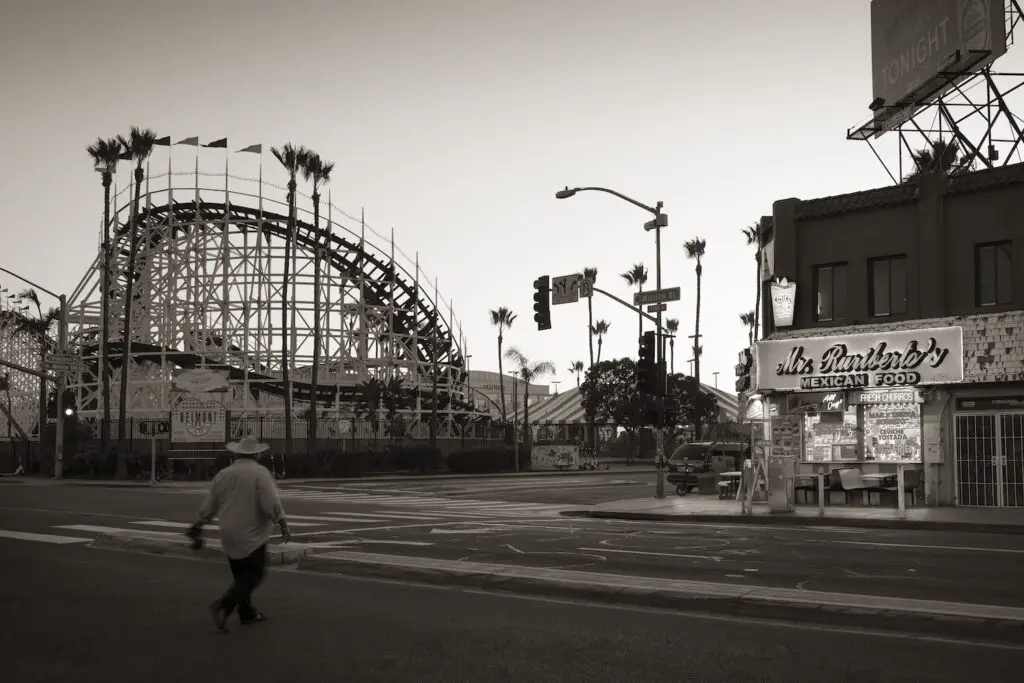
“That’s a hard intersection to photograph—a lot of traffic and just a lot of stuff going on. There are stop lights that are hanging down right next to there, so it took a while to figure out how to position myself so those weren’t blaring in the shot. And then it was just literally a stroke of happenstance: This gentleman walks across the street, and I was ready for him, and I was able to get the shot.”
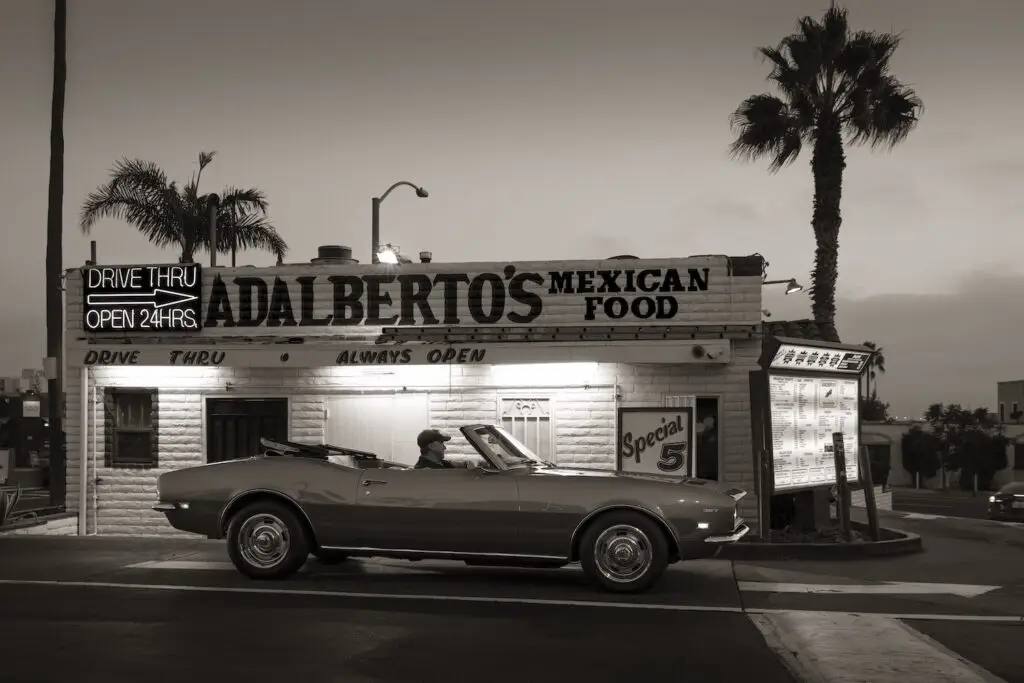
“Again, I really love the directional arrows and the signage. And there’s another situation where you realize, Wow, this perspective here—you got the palm trees, it’s got everything, but what would really make this shot would be an interesting, beautiful car. I have a friend who has this ’68 Camaro and I said, ‘Hey, any interest in going for tacos?’ So, this was constructed in that regard, but it started with a vision. Ansel Adams always talked about visualizing an image in advance, so in this case, I brought along that opportunity. Some people are disappointed when they hear that. But you know, the truth is, I’m an advertising photographer. This is not photojournalism; it’s not documentary. This is art.”
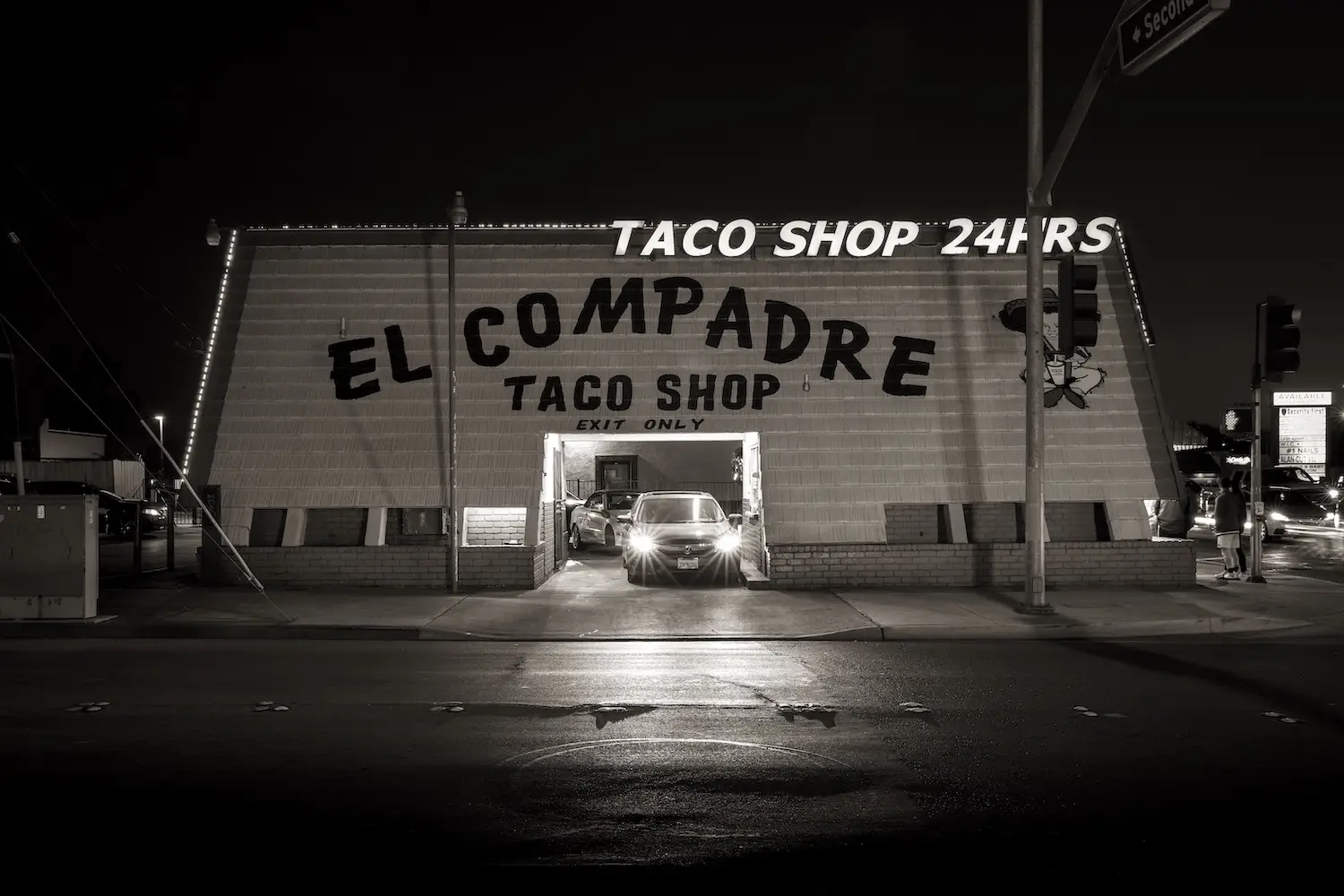
“I visited this one numerous times. It was awkward figuring out how to tell the story of it, as it’s interesting-shaped all the way around. In this case, I’m standing in the gas station across the street. For a long time, the question for me was, ‘Do you include cars? Do you include people? Or is it more about the solitude of the structure?’ But I began to feel that, because of the drive-through nature of this one, the car was important.”
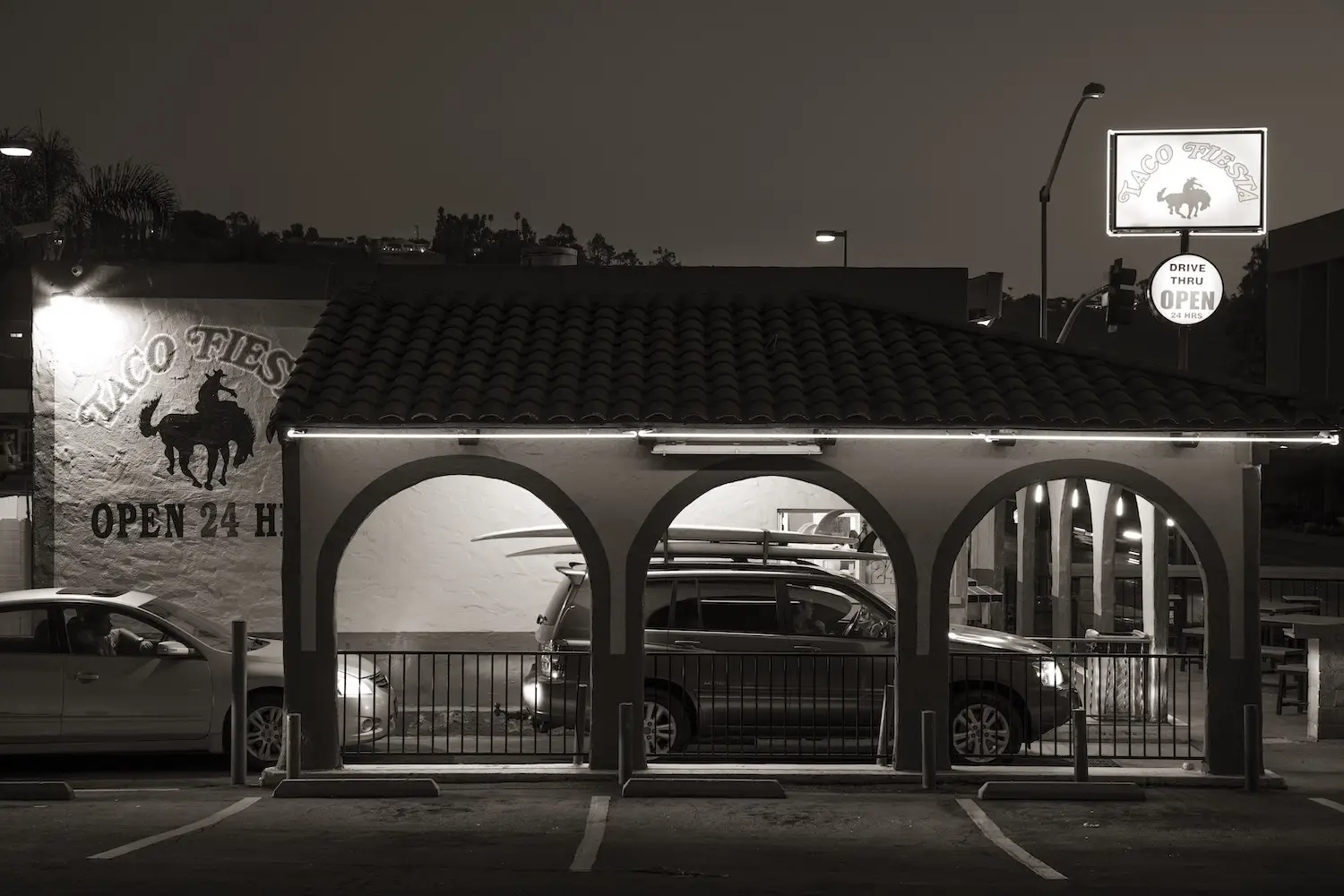
“I’m looking for these little indicators of location, these elements that create the sense of place. A guy driving through with surfboards on his roof, a palm tree in the background, and a taco stand—this has got to be San Diego.”
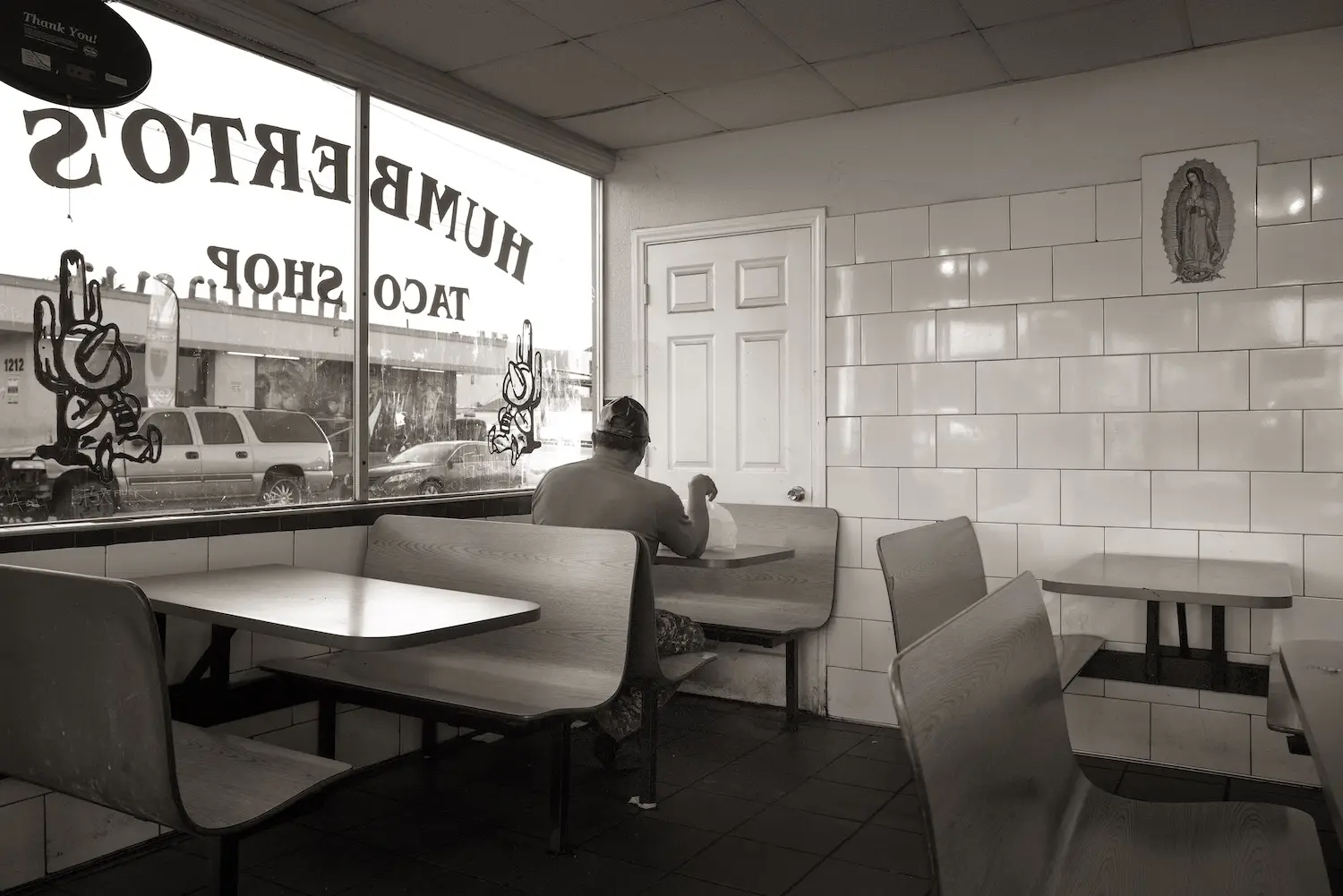
“I didn’t want to be locked into only photographing these places in one way, so I started to wander inside [sometimes] and explore a little bit. In this case, there’s the Madonna up there on the wall; she’s looking down over the patrons of the restaurant. The signage on the window, the cartoon. This says so much: Eating tacos is a blessed event.”
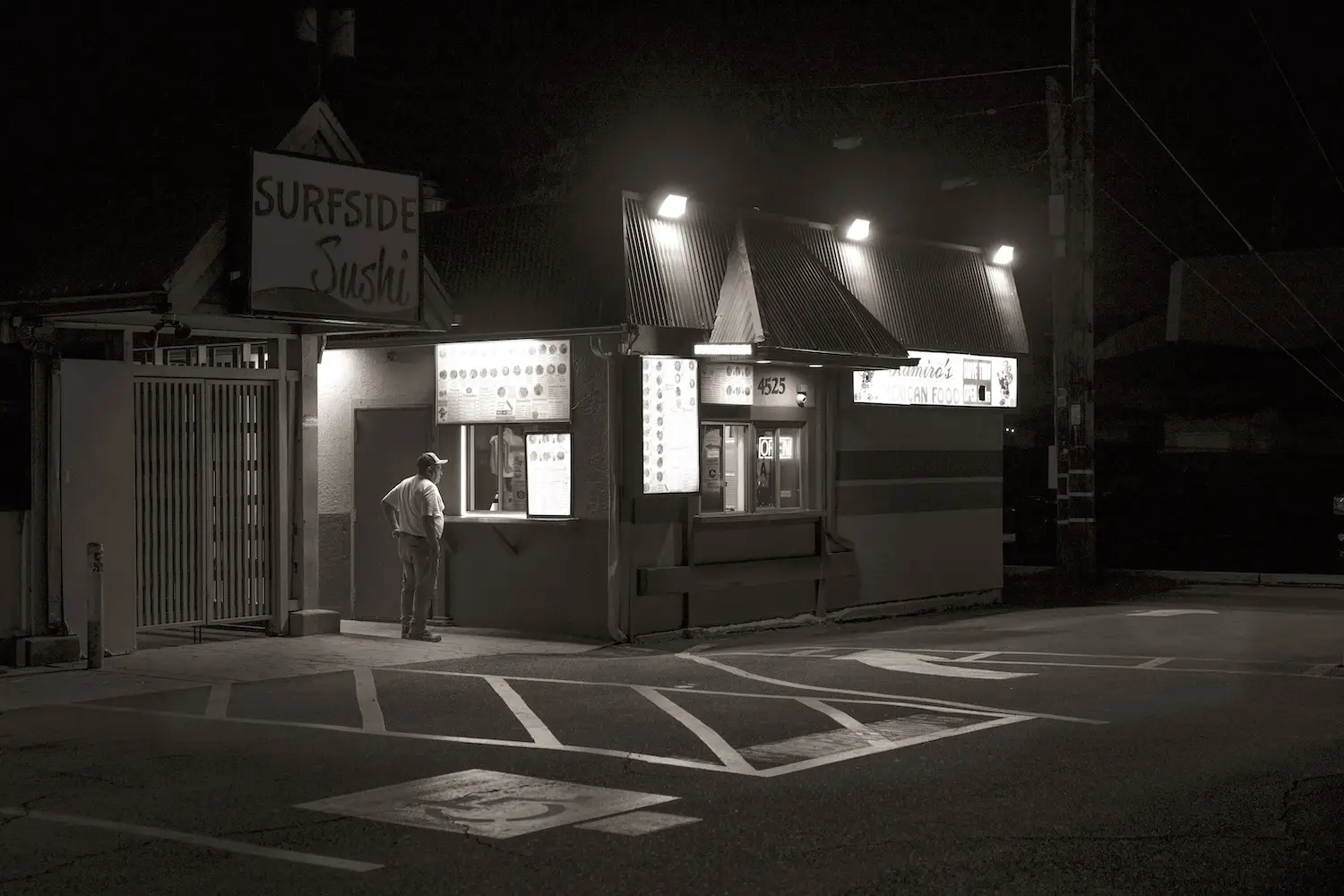
“I call this one Ramiro’s Nighthawk as an ode to the Edward Hopper Nighthawks—the solitary man out at night at the taco stand. This no longer exists, actually. That whole lot [in Pacific Beach] has been redeveloped.”
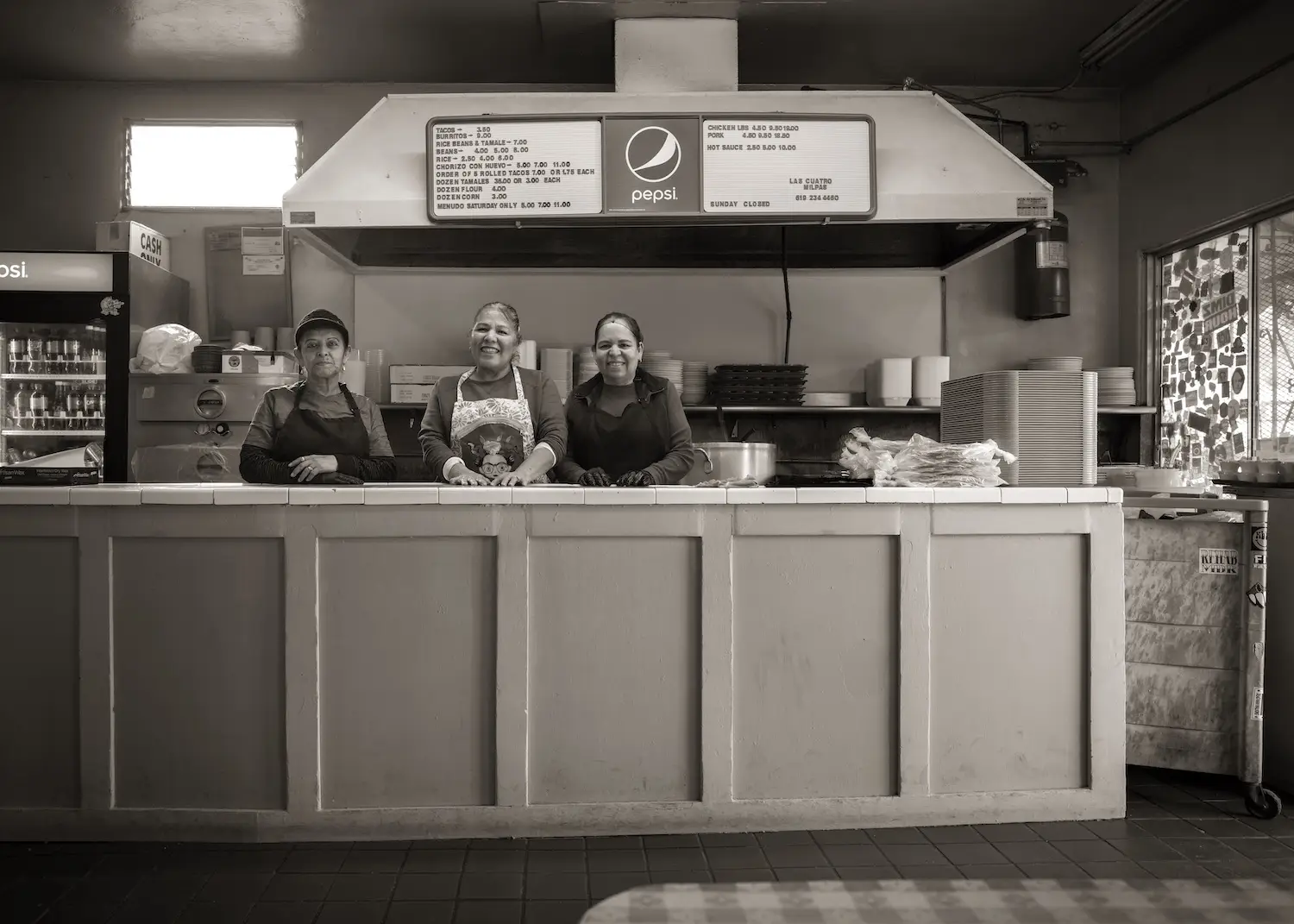
“When we got there, it was morning time, so it wasn’t so crowded. Everybody was super gracious. I think in this case, I nudged the ladies together a little bit, you know, so I could get this portrait of them, and then it’s just a matter of being patient. Sometimes I’m kind of saturating for a little while in a place and just observing what’s going on.”
